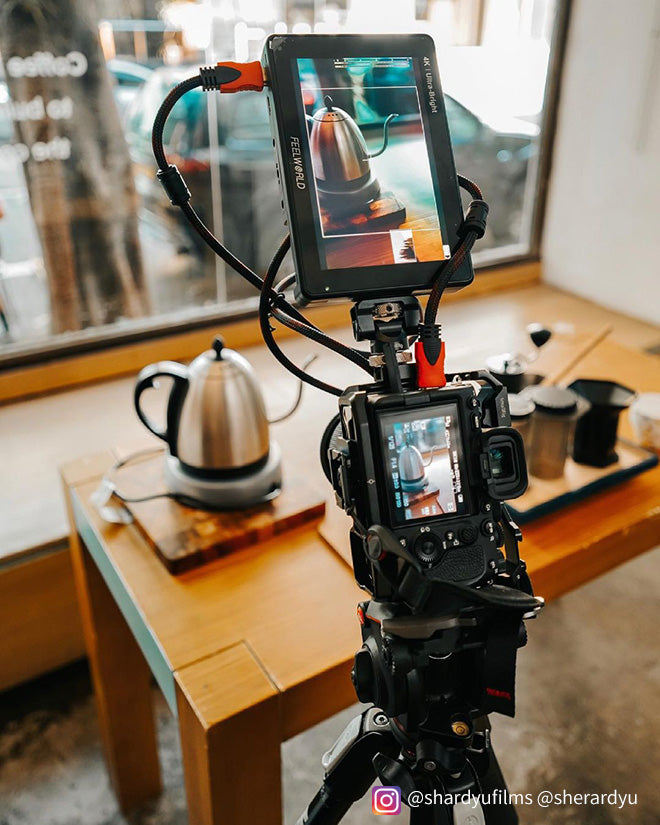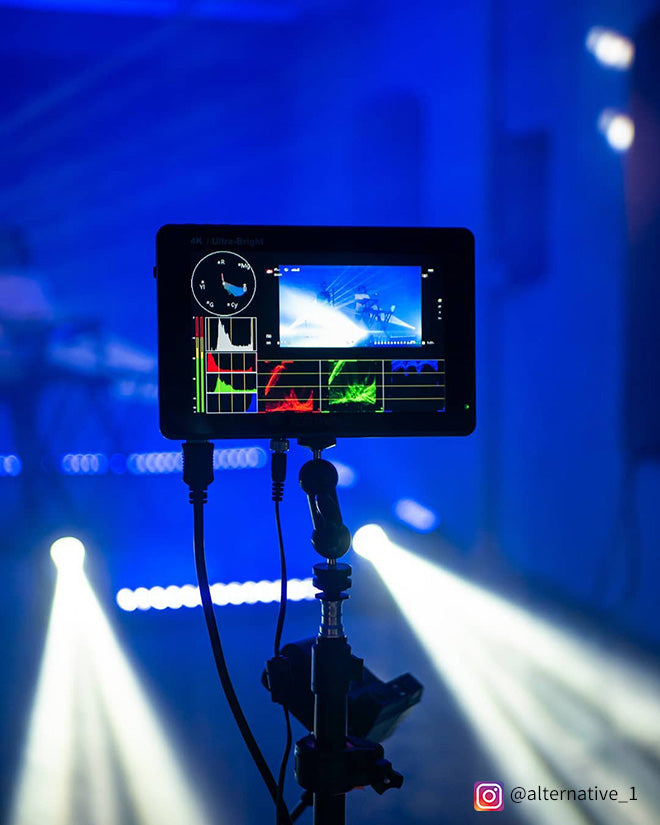Why You Need a Field Monitor?
Jun 02, 2021
What is a field monitor?
First, let’s go through what a field monitor is and what kinds are available. Sometimes we called field monitors as lcd monitors or camera monitors. A monitor is ultimately a screen which can be attached to your camera to give you a view of exactly what you will see through the viewfinder or on a screen on the back of your camera. They can be mounted on top of your camera or on a separate stand and plug into the HDMI port of your camera to ultimately show you an image of what the camera is seeing. They come in a variety of different sizes, you can get 5 inch or 7 inch monitors. They’ve probably the most common but you can also get 10 inch and larger, and quality wise you can get hd which is relatively standard but also 4k monitors on the more expensive monitors. You can also install luts. So you can get a good idea of what the raw image will look like once it’s been processed.

The use cases for a monitor really depend on what you use your camera for. Do you use it just for photography or videography? I think it’s fair to say that if you use your camera to record video, then the argument for actually buying a monitor is increased. Let’s break down the thought process of purchasing a monitor into photography versus videography. Let’s take a look at the use cases of a monitor for photography.
Use case and benefits for photography
These days most cameras come with a higher quality screen. And mirrorless cameras actually provide you with an electronic viewfinder. Some camera screens can actually be flipped to face forwards, so you can see them when you’re in front of the camera and ultimately a screen is generally always going to be available to the photographer. Generally in photography, you’re going to find yourself behind the camera, so the screen and the viewfinder will normally be available to you. A monitor might provide you with a bigger screen or even one of a better quality. A couple of cases where you’ll actually found the monitor useful for photography have really revolved around situations where you’ve had to be in front of the camera and nobody else is around to take photographs for you. For example, if you want to get some nice photographs of the special day to capture it and remember it, but you need to be in the pictures along with your family or friend. There was nobody else around to take photographs for you so in that situation the monitor came in really useful because you could make sure everything looked like you wanted it to and use a remote shutter release to actually take the photographs. If you’re running a social media campaign or account, or you’re having to be both in front of the camera and being the photographer, maybe something clothing or makeup theme, and I can see the use cases of a monitor beginning to stack up.


Use case and benefits for videography
It’s really when we star looking at the applications of a monitor for recording video that we can really see how valuable they can be if you’re creating a content where you’ll constantly be in shot such as YouTube videos or vlogging, unless you’re lucky enough to have a camera where the screen can be flipped to face forward or have a separate camera operator then you really can start to see what an aid a monitor can be. A monitor will give you a clear view of what is being recorded. You can make sure that everything is in frame correctly you can make sure that your exposure settings are right and everything looks exactly as you want while you’re recording a video. However I think a monitor is actually something that’s really useful to those that are new to recording video content, because not only it show you the picture that the camera can see but also show you the settings that the camera has, for instance you can see the exposure settings and whether or not the camera is actually recording. A good example of this is the first ever video for a new. Sometimes they thought they’d set everything up correctly and turned it all on, but they didn’t realize they hadn’t actually turned on the microphone that was plugged into the camera, that mean the camera wasn’t actually picking up any sound at all and when they sat down to edit the video, they had nothing natively to synchronize my lavalier microphone recordings with, so they had to manually synchronize all the voice and sound with the picture which was an absolute nightmare if they’d been able to see the screen. They would have actually seen the embedded audio with two little bars that indicate the volume that’s being picked up by the camera were absolutely flat, it was picking up nothing but they couldn’t see the screen. Had they had a monitor at that point in time and they could have seen those bars they’d have realized nothing was being picked up volume wise and therefore could have rectified the situation before they recorded a gigantic segment of the video. So as you can see, the monitor is a really useful tool if you’re creating video content and especially if it’s something you’re new to. So you should go and order a monitor. Well, that really depends on what stage of your creation career you’re at and what kind of disposable income you have.


Field monitor - Creator's best partner
In summary, if you’re a video creator or you’re going to spend a lot of time in front of the camera, then I really think monitor is something that will benefit your creation process. They are a great tool for making sure that everything is exactly as you want and that everything is switched on. So I’d really recommend one in this situation. You just need to put some thought into how much you want to spend and what level of monitor you really need. If you would like to know how to choose a suitable monitor, this blog would be a good reference for you: HOW TO CHOOSE THE MONITOR SUITABLE FOR YOUR CAMERA?

